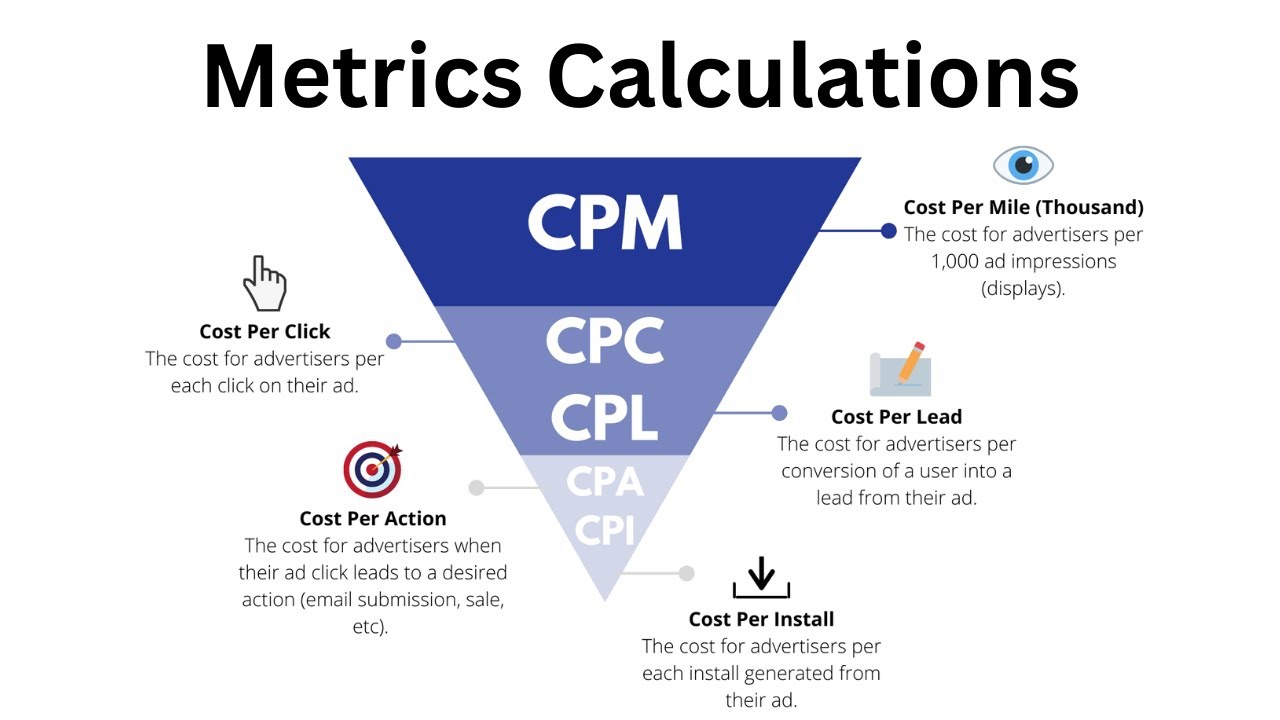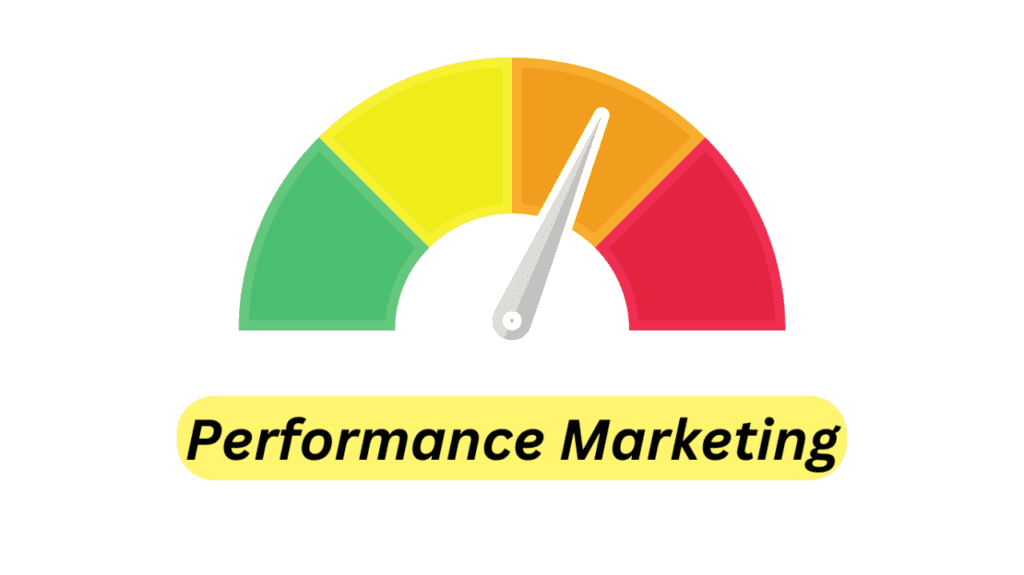Performance marketing is a strategy where you only pay for specific actions or achieved results, which is ideal for businesses aiming to attribute results directly to their marketing efforts.
Performance marketing is possible through channels like pay-per-click advertising.
What is performance marketing?
Performance marketing is the assurance of a positive return for every dollar spent.
Where a traditional digital marketing strategy drains your budget without promising the desired results, performance marketing does the opposite. You only pay for the results – providing businesses with the stability they’ve always desired.
Whether it’s a click, a lead, or a sale, each action is measurable, allowing businesses to see the return on investment (ROI) for each marketing dollar spent.
Performance marketing is based on various channels including:
- Affiliate marketing.
- Pay-per-click (PPC) advertising.
- Social media advertising.
- Search engine marketing.
The concept of performance marketing emerged shortly after the rise of pay-per-click (PPC) advertising, which began with banner (display) advertisements and Google AdWords (now Google Search advertisements).
How Performance Marketing Works?
So how does all of this work? Let’s break it down.
Advertisers place their advertisements on a certain channel and then pay based on how well those ads perform. There are several methods to pay for performance marketing:

1. Cost Per Click (CPC)
In the cost-per-click (CPC) model, advertisers pay for the number of clicks their ad receives. Consider it like paying for the number of customers that visit your online store.
More clicks mean more potential customers on your site. This is a terrific method to increase visitors to your website.
2. Cost Per Impression (CPM)
This model is all about visibility. You pay for every thousand views (impressions) your ad receives. CPM is a smart move for brands looking to get their name out there.
3. Cost Per Sales (CPS)
With CPS, you’ll only pay the marketer when a sale is made. This model offers incredible value to businesses of all sizes, especially startups wishing to maximize their budgets. A win-win situation for everyone since you only pay for the actual revenue generated.
4. Cost Per Leads (CPL)
Cost per lead – like cost per acquisition, only requires you to pay when desired leads are generated. For example, a potential customer filling out a contact form on your website is a lead. The CPL model is perfect for acquiring qualified leads. A certain price must be paid upon acquisition of the leads. Your marketer could also use a marketing funnel, to determine how prospective buyers react to your ads.
5. Cost Per Acquisition (CPA)
CPA is a versatile model where advertisers only pay when the desired action is taken. All actions taken, such as making a purchase, providing contact information, and reading your blog.
Types of Performance Marketing Channels
Performance marketing spans multiple channels, each of which equips marketers with a unique way to reach and engage the target audience.

Social media
Social media is like a treasure trove of marketing opportunities – mainly because 5.07 billion users spend their time there every single day.
You can reach your target audience in their own environment by targeting a specific demographic.
Display ads
A display ad can appear as pop-ups on social media feeds, 3rd-party websites, and applications.
These ads can really help you catch your consumers’ attention but only if you use striking visuals and convincing copy.
Content marketing
Content marketing will help you engage your audience in new and interesting ways. Your marketer can do it through blog posts, YouTube videos, and podcasts.
In the end, it’s not just about selling, but about adding value and building relationships with potential customers.
Native advertising
A native ad integrates well with the existing content of a website, making it less intrusive and more relevant.
Marketers can make the most of these ads since they don’t stand out like a sore thumb. A subtle, yet effective way to bring attention to your brand.
Search engine marketing (SEM)
Search engine marketing involves the use of search engine optimization or SEO marketing. This marketing channel allows firms to utilize search engines to position themselves high in SERPs for various phrases.
For example, by ranking high in search engines, when prospective clients conduct an online search for the products or services that you offer, your company’s website should be among the first three results. Most internet users will click on one of the first three websites that appear after running a search.
The more consumers visit your website, the more business you are likely to receive. If this marketing channel is included in your strategy, it is the responsibility of your marketing company to guarantee that your company ranks at the top.
Affiliate marketing
Affiliate marketing and sponsored content are two channel terms that are sometimes used interchangeably. They’re so similar that it’s OK to utilize them in this manner.
The term “sponsored” content indicates that a monetary transaction has been agreed upon between a firm and a content publisher. If your firm is sponsored by a well-known corporation, it will probably see rapid growth.
What are the benefits of performance marketing?
There are no signs of digital marketing slowing down. If you utilize performance marketing to your advantage, you will notice the following benefits:

- Cost-effective campaigns: When you conduct a performance marketing campaign, you only pay for activities that result in clicks or leads. Every dollar spent adds to results, so spend it carefully.
- Targeted reach: Campaigns may be fine-tuned to reach specific audiences, ensuring that the right people see the appropriate advertisements at the right time.
- Flexibility: If you need to change strategy, performance marketing campaigns may be quickly altered using ad data. You may easily scale up or down to meet your needs.
- Measurability: Conversion rates, click-through rates, and cost per acquisition are recorded in real-time, allowing you to swiftly review and adjust campaigns.
What are the Limitations of performance marketing?
Performance marketing is the spiritual heir to a much older industry: direct response advertising (usually found in newspapers or direct mail). Consider performance marketing as “digital direct mail ads” to better understand its limitations:
Doesn’t focus on brand-building
Performance marketing is highly targeted and conversion-focused, which means identifying and nurturing the subsegment of your market that is most likely to convert across numerous touch points. In other words, introducing your brand to a large number of individuals is not the greatest technique.
Risk of brand dilution
Performance marketing relies on call-to-action (CTA) messages. In other words, practically every performance marketing ad prompts the viewer to take action (“Learn more,” “Claim offer,” “Shop styles,” etc.). For firms looking to generate brand equity (or buzz), too much performance marketing can dilute your message and cause people to tune you out.
False certainty in attribution
Performance marketers still can’t determine with certainty how much income their advertising generated. Some of this is related to recent changes in privacy policies: Many browsers limit marketers’ ability to view user behaviors (such as conversion).
Performance marketing is extremely effective—millions of merchants have relied on it to grow their businesses. Understanding its major levers, channels, and hazards will prepare you to join its ranks.
How Performance Advertising Works?
Define Performance Goals
The advertiser decides what particular performance objectives they want to achieve with their advertising campaign, such as boosting website traffic, generating leads, or making sales.
Target Audience
The advertiser determines who they want to reach with their ad campaign, including demographics, interests, and geography.
Select Advertising Channels
The advertiser selects which digital advertising channels to utilize to reach their target audiences, such as search engines, social media, and websites.
Create Ad Content
The advertiser creates the ad content, which may be text, graphics, or video. The advertisement should be created to effectively convey the message and persuade people to take the intended action.
Set Bid and Budget
The advertiser determines a bid for each targeted action as well as an overall budget for the ad campaign. The bid is the price the advertiser is ready to pay for each desired action, whereas the budget is the total amount of money the advertiser is willing to spend on the ad campaign.
Launch Campaign
The advertiser initiates the ad campaign and displays its advertisements to the target audience via the advertising channels selected.
Track Performance
The advertiser monitors and evaluates the ad campaign’s performance to assess its efficacy. This may involve tracking the amount of clicks, conversions, and total ROI.
Optimize Campaign
Based on the results, the advertiser may modify the ad campaign to improve performance, such as modifying the ad content, targeting, bid, or budget.









